Dive Details
Location
Date
Wednesday 10 October 2018
Time
7:58am - 9:33am
Buddy
Roney Rodrigues
Seas
Slight
Visibility
10 to 15 metres
Duration
95 minutes
Maximum depth
17.1 m
Average depth
12.0 m
Water temperature
17°C
Dive Profile from Garmin Descent Mk1

Tides at Botany Bay AEDT
Note that tides at dive site may vary from above location.
Low
3:40am
0.23m
High
9:54am
1.72m
Low
4:06pm
0.25m
High
10:14pm
1.64m
Details
I had wanted to dive yesterday but stayed home to wait for my new contract at the Museum. I missed good conditions but was hopeful they'd be good again today. I agreed to meet Roney at 7:30am and when I arrived it looked great. There were barely any waves hitting the entry/exit.
We jumped in and swam out on the surface. I was surprised how cold it wasn't. The water looked clear, too. We descended to the kelp. The visibility was between 10 and 15 metres. The water temperature was around 18°C and there was barely any surge.
We had barely moved from the spot we descended to as Roney was going to show we where he'd seen the orange red-fingered anglerfish with dark eyes yesterday. The anglerfish wasn't there. We started to search the surrounding area and I found it on a rock a few metres to the south-east. I tried to remember the location so I could find it again.
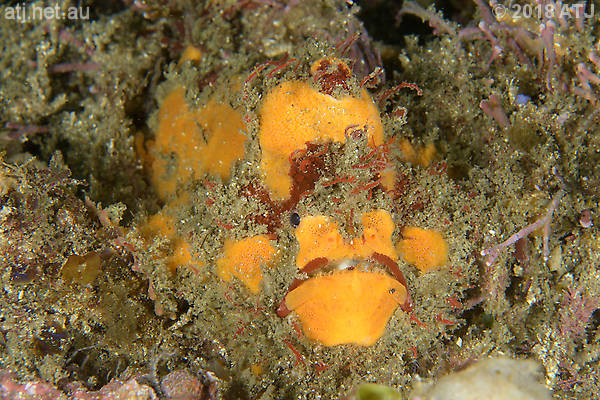
Red-fingered anglerfish, Porophryne erythrodactylus. 9.3 m.
I swam along to the rocks where I had first seen it on 23 June. I was hoping to see the male White's seahorse in the sea tulips on the adjacent rock. It wasn't there. It had been there last Thursday.
I followed the sand line against the incoming tide, which was quite strong, to the hole where the upside-down pipefish and sawtooth pipefish have been. Roney was swimming along a little higher than me. I looked into the hole and spotted one of the upside-down pipefish and the sawtooth pipefish. The other upside-down pipefish may have been there but I couldn't be sure. After I had taken some photographs I pointed out the hole to Roney.

Juvenile upside-down pipefish, Heraldia nocturna. 13.2 m.

Juvenile upside-down pipefish, Heraldia nocturna. 13.2 m.
I looked on the rock above the hole for the pygmy pipehorses that used to be there but didn't find them. We continued along the reef up from the sand line but I eventually made my way back to the sand line to see the large yellow red-fingered anglerfish. It was still in the same spot as it has been for the last few weeks and some time before that. I looked around for the salmon red-fingered anglerfish but couldn't find it.
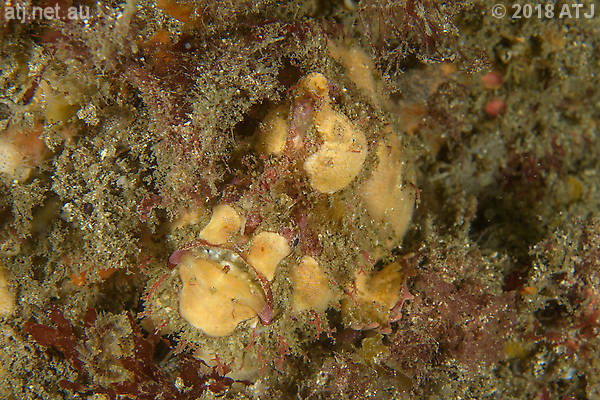
Red-fingered anglerfish, Porophryne erythrodactylus. 13.2 m.
I followed the sand line to Little Big Rock and then swam up to the large rock with pygmy pipehorses. I found the male pygmy pipehorse first and then eventually found the female.
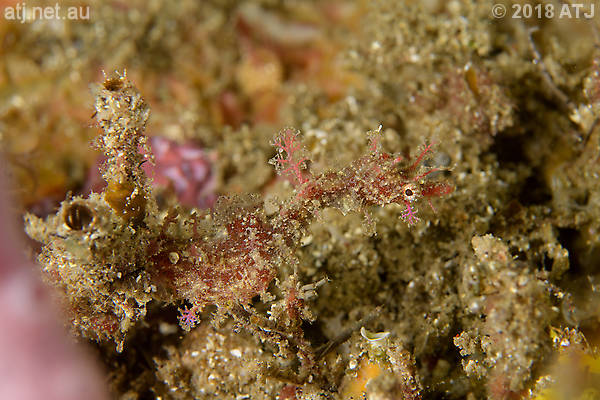
Male Sydney pygmy pipehorse, Idiotropiscis lumnitzeri. 12.2 m.
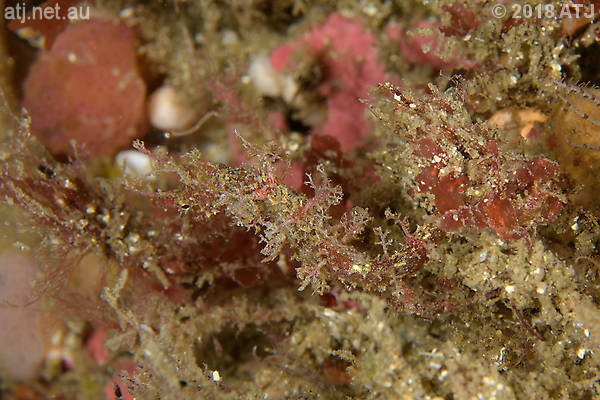
Female Sydney pygmy pipehorse, Idiotropiscis lumnitzeri. 12.4 m.
I swam south-east past the octopus and then down towards Little Big Rock to the Nembrotha spp. nudibranchs. They were both still on the rock.
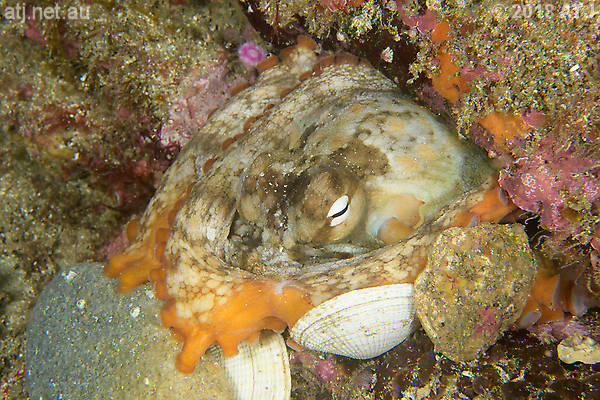
Common Sydney octopus, Octopus tetricus. 11.8 m.

Nudibranch, Nembrotha sp. 12.1 m.

Nudibranch, Nembrotha sp. 12.2 m.

Nudibranch, Nembrotha purpureolineata. 12.3 m.
I briefly checked out the rock on the sand line just past Little Big Rock for the pygmy pipehorses that used to be there but I still couldn't see any. I then saw the male weedy seadragon with eggs in the kelp between Little Big Rock and Diversity Rock.

Weedy seadragon, Phyllopteryx taeniolatus. 13.3 m.
I checked Diversity Rock for pygmy pipehorses before swimming up to the basket star.

Basket star, Astrosierra amblyconus. 12.2 m.
Roney and I swam slowly from New Basket Star Rock to Sponge Hollow. I swam on to the rock with the one-eyed seahorse and found her on the sea tulip. Roney indicated he was turning around and heading back. (He had somewhere to be later.) I still had 130 bar so I kept on towards Big Rock.
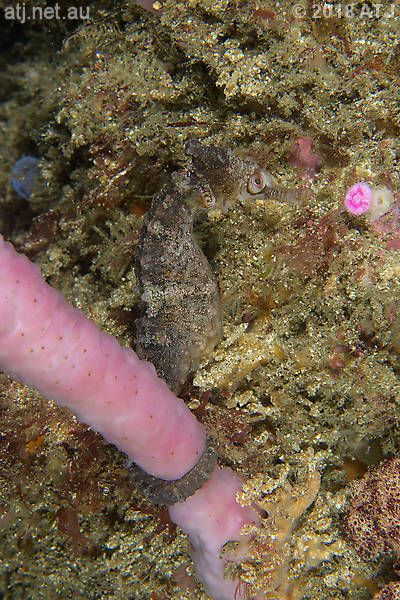
Female White's seahorse, Hippocampus whitei. 12.9 m.
When I got to Big Rock I thought I'd try to find the small orange anglerfish that George had pointed out 11 days ago. I headed for the area but couldn't see it. I figured that as I'd gone this far that I may as well go to the area where the red Stigmatopora sp. pipefish have been to see if I could find them. I swam against the current to the spot and looked in all the algae I've seen them before but I was not able to find even one. I didn't have a lot of time to look and so will have to wait until my next dive at The Leap for a proper look. I did see the dwarf lionfish.
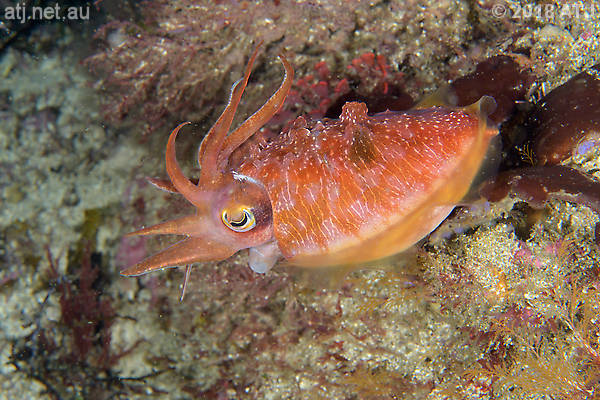
Reaper cuttlefish, Sepia mestus. 16.4 m.
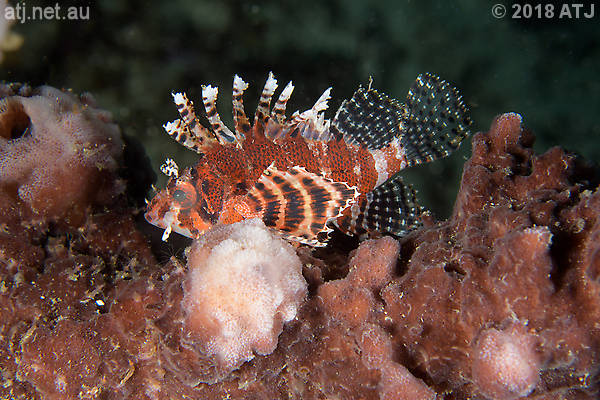
Dwarf lionfish, Dendrochirus brachypterus. 15.9 m.
I rode the current back towards Big Rock along the sand line. I kept my eye out for the orange red-fingered anglerfish along the way. I actually spotted it on the side of a rock. I guess it is easier to see when coming from that direction.
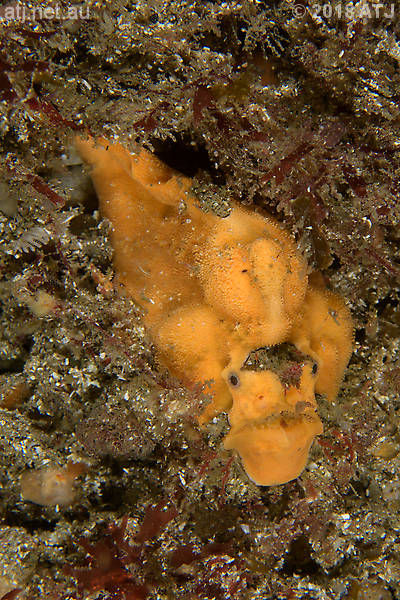
Red-fingered anglerfish, Porophryne erythrodactylus. 14.6 m.
I swam past Big Rock and on to the rock with the one-eyed seahorse. I was surprised not to see her on the sea tulip I'd seen her on just a few minutes ago. I found her not far away.
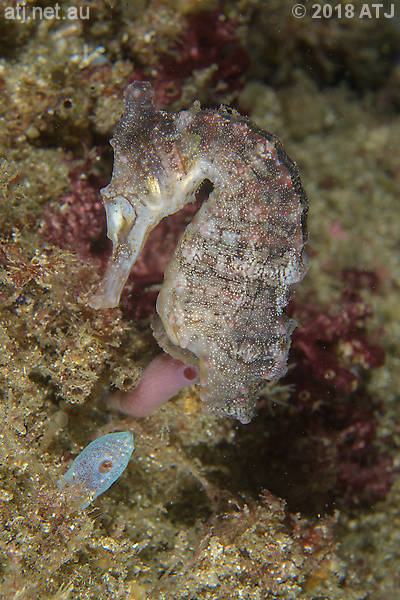
Female White's seahorse, Hippocampus whitei. 12.6 m.
I continued along the top of the reef past the basket star and Diversity Rock. I found the male weedy seadragon with eggs again in the kelp between Diversity Rock and Little Big Rock.
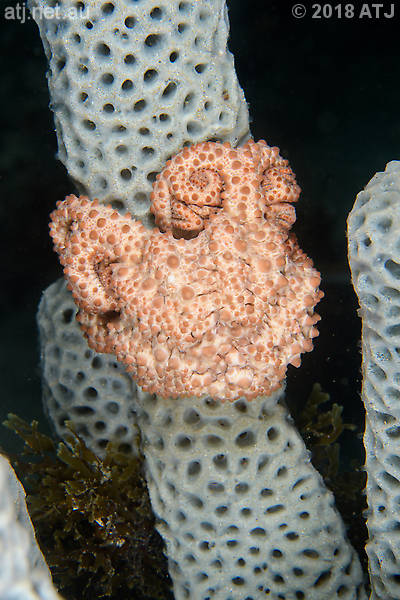
Basket star, Astrosierra amblyconus. 12.5 m.

Weedy seadragon, Phyllopteryx taeniolatus. 13.3 m.
I visited the nudibranchs, octopus, and pygmy pipehorses on the way back but didn't have time to photograph the pygmy pipehorses. I stopped at the large yellow red-fingered anglerfish.
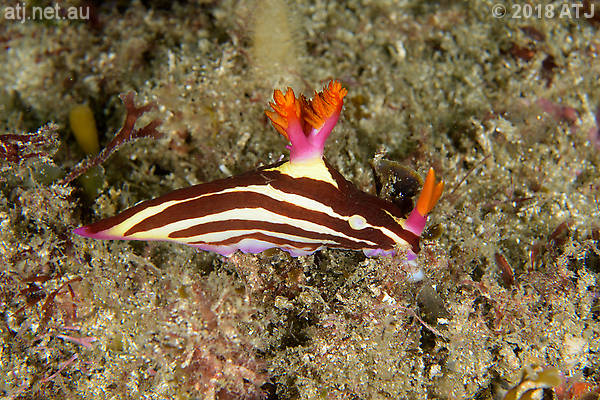
Nudibranch, Nembrotha purpureolineata. 12.1 m.
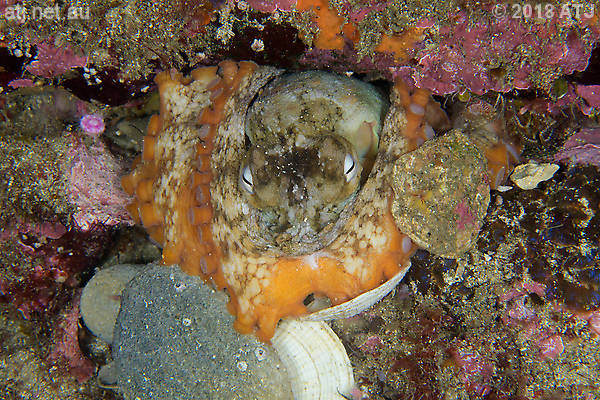
Common Sydney octopus, Octopus tetricus. 11.9 m.
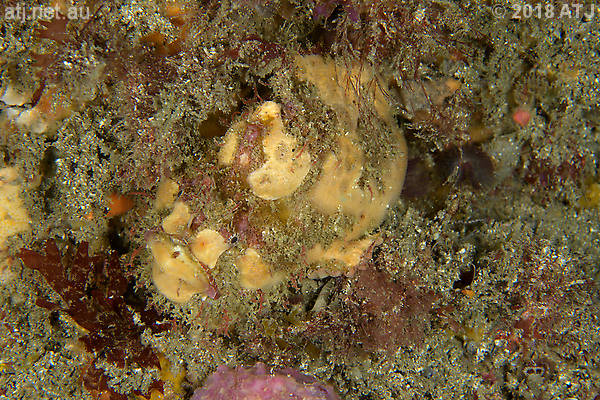
Red-fingered anglerfish, Porophryne erythrodactylus. 13.3 m.
I stopped at the hole with the pipefishes and took a few more photographs before continuing on to try to find the orange red-fingered anglerfish with dark eyes again. I initially couldn't find it but then managed to spot the rock.
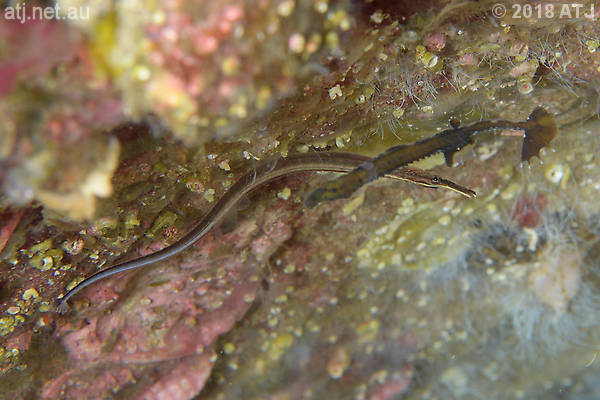
Upside-down pipefish, Heraldia nocturna, photobombing a sawtooth pipefish, Maroubra perserrata. 13.3 m.
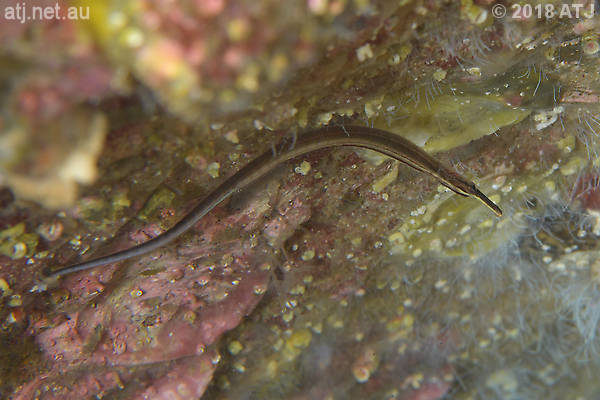
Sawtooth pipefish, Maroubra perserrata. 13.3 m.
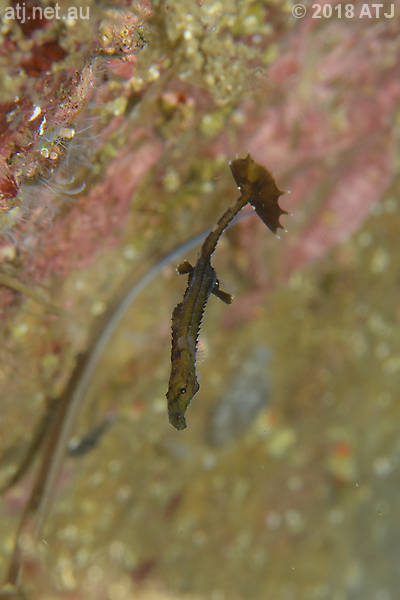
Juvenile upside-down pipefish, Heraldia nocturna. 13.3 m.
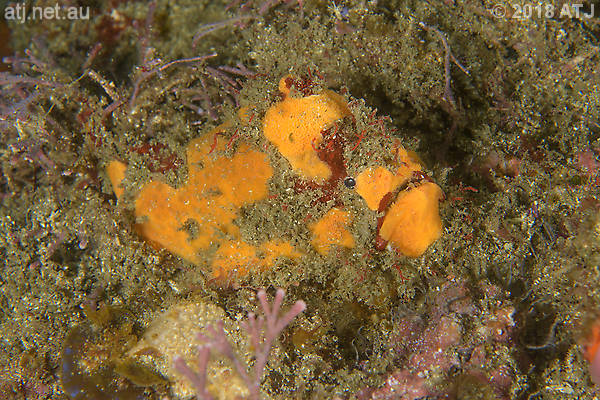
Red-fingered anglerfish, Porophryne erythrodactylus. 9.6 m.

Red-fingered anglerfish, Porophryne erythrodactylus. 9.8 m.
I swam straight to Split Rock and started my safety stop. Once complete, I headed for the exit and got out. It was still calm enough for an easy exit despite being near high tide.
Camera gear
Camera
Nikon D500
Lens
Nikon AF-S Micro Nikkor 60mm f/2.8G ED
Housing
Ikelite 6812.5
Lens port
Ikelite Flat Port 5502.41
Strobe
2 x Ikelite SubStrobe DS161